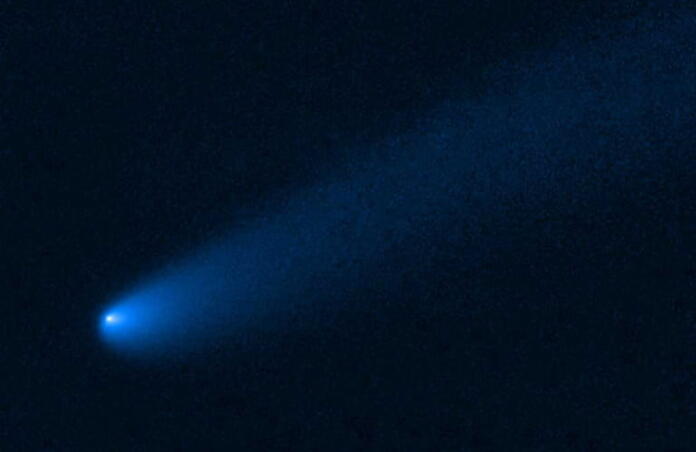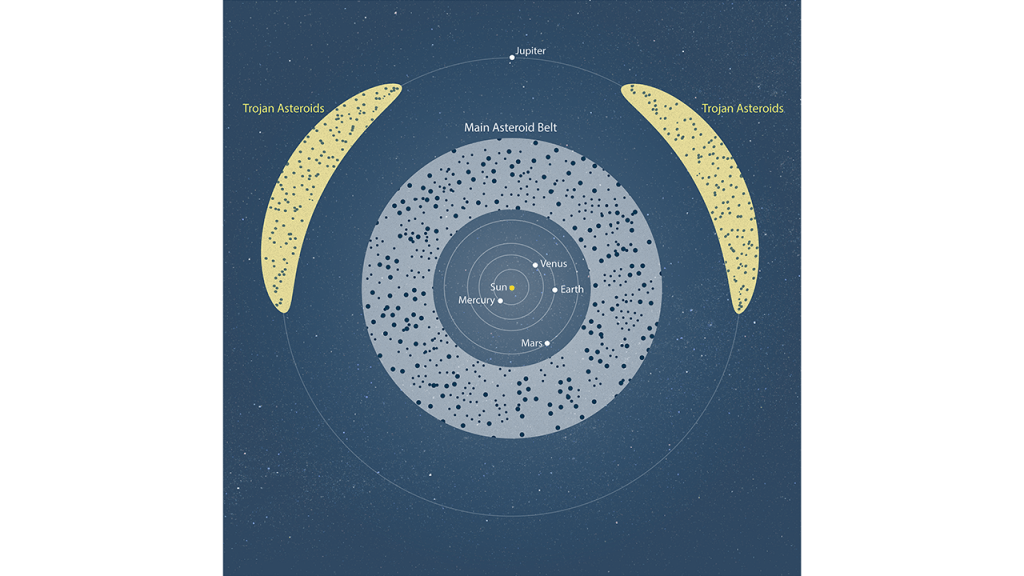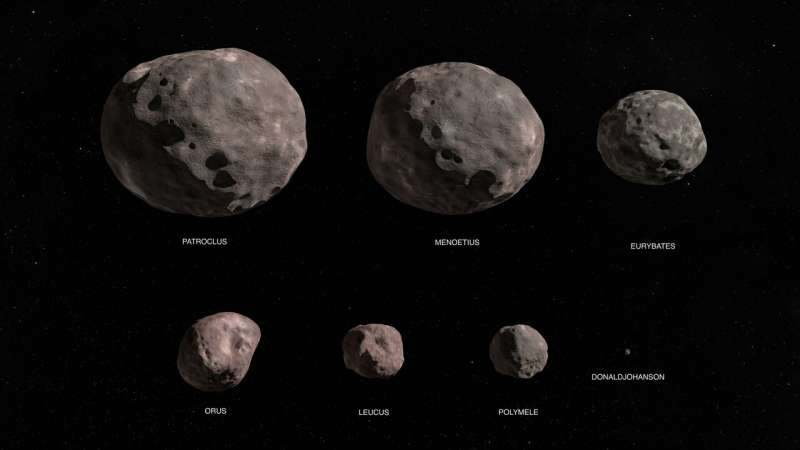Centaurs, Trojans and Hubble’s latest image

The Hubble Space Telescope (HST) acquired a high-resolution image of a Centaur, the orbit of which has been severely impacted by Jupiter’s gravitational attraction.
Our Solar System behind the Asteroid Belt is very dynamical: asteroids and comets orbit the Sun, but the massive gas giants Jupiter, Saturn, Uranus and Neptune exert strong gravitational forces that affect these bodies of rock and ice. Centaurs are a similar category of Solar System objects, orbiting the Sun and located between Jupiter and Neptune. No precise definition has been agreed on by space organisations, however, one of the main characteristics is that they are a “hybrid” between rocky asteroids and icy comets, although Chiron for instance has a diameter that approximates that of a dwarf planet. Generally speaking, though, Centaurs are too small to conduct in-depth research notably about their chemical composition, which limits the understanding astronomers can have about their origin.
What is measurable is that they have very elliptical orbits, when they are getting closer to their perigee (the orbital point closest to the Sun) a comet tail, or coma, will start to appear, i.e. the gas it contains evaporates. However, those orbits can easily be disturbed by the gas giants; some of the descriptions of Centaurs include that they will enter, within the short timescale of 10 million years, one of those planet’s Hill Sphere, which is the space around a planet where its gravitational influence is strong enough to keep a satellite in orbit around it. Trojan asteroids are rocky bodies actually captured by Jupiter – they may be found at either of its Lagrangian points of gravitationnal equilibrium.

Two years ago, the Asteroid Terrestrial-impact Last Alert System (ATLAS) spotted a Centaur, P/2019 LD2, that was becoming active and exhibiting a coma, being captured by Jupiter in the region of its Trojans. Computer simulations have since revealed that this is not the first “Trojan comet”, but that the Centaur has in fact only temporarily been attracted by Jupiter and will eventually resume its course around the Sun. With the HST, last week the unprecedently high resolution image of the rocky core and gaseous tail that you see as the cover image was obtained. The upcoming Lucy Mission, which will launch in October this year and will have reached its numerous targets after 12 years, will give closer images of Trojan asteroids.

Understanding Centaurs and Trojan asteroids better will lead to further insights into the formation of planets from the aggregation of these bodies, which haven’t undergone any evolution since and are thus remnants of the proto-Solar System. It is thought that some types of Trojan asteroids may even contain organic molecules necessary for the formation of life. Added to that, theories in astrobiology suggest that Jupiter’s influence on small bodies coming towards the inner Solar System may have proved crucial in shielding Earth from numerous major asteroid impacts.
For now, we can appreciate the HST’s close-up of the Centaur, and don’t forget that you can observe comets and asteroids through the advanced request system!
Cover Image: P/2019 LD2, NASA, ESA, STScI, B. Bolin (IPAC/Caltech)
Image credits:
1- Trojan asteroids, NASA, ESA, and J. Olmsted, (STScI)
2- Lucy mission's target, NASA's Goddard Space Flight Center Conceptual Image Lab
